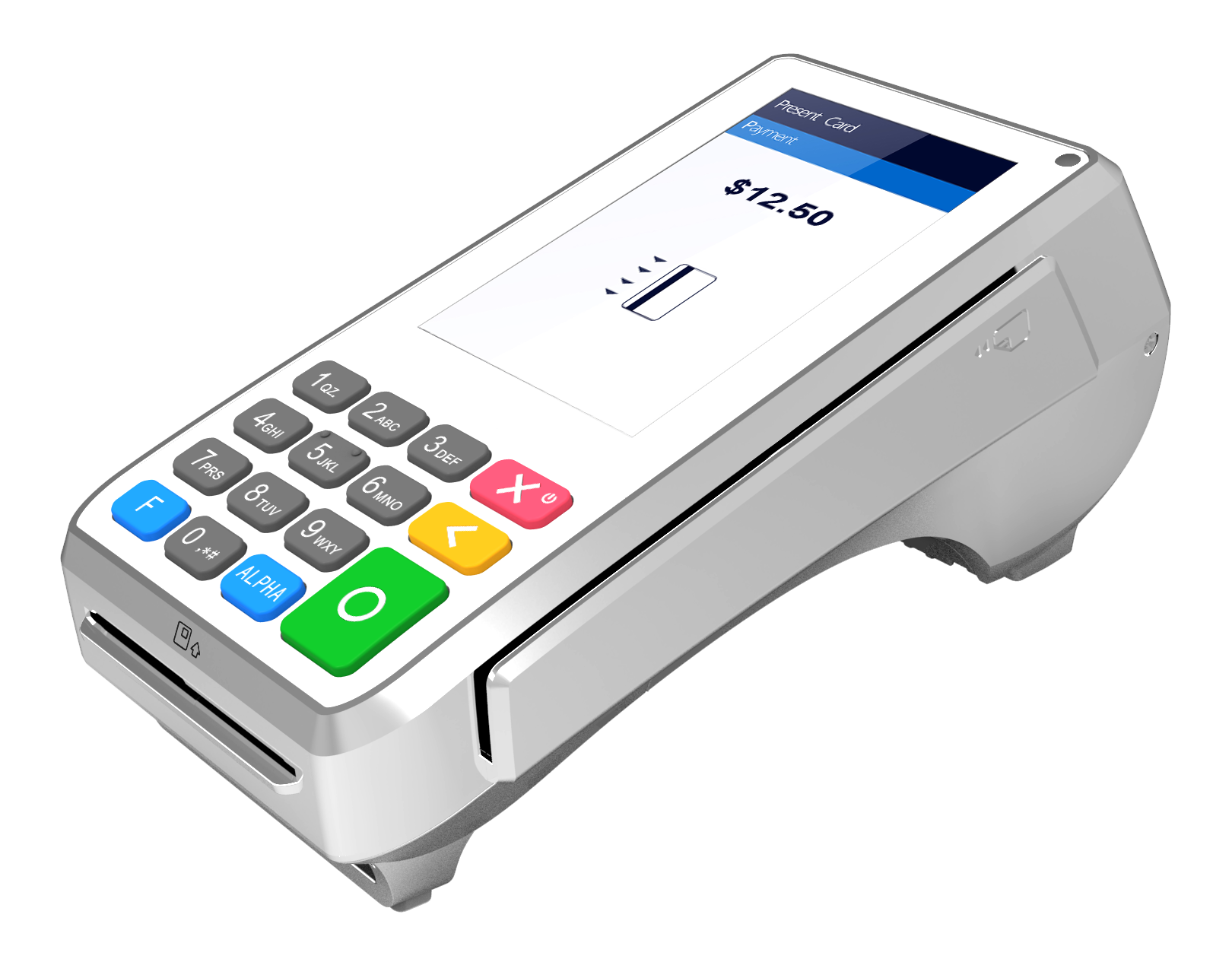EMV
Compliant and Fast EMV Chip Payment Technology is here.
EMV is a global standard for credit and debit card processing designed to replace magnetic stripe cards. Also referred to as chip and PIN or chip and signature, this smart chip technology consists of a microprocessor embedded into payment cards and smart devices such as mobile phones.
Cardholder data is more secure on a chip embedded card that utilizes dynamic authentication, than on a static mag stripe card. With EMV, both the terminal and the card play important roles in the authentication process which is not the case when using magnetic stripe technology.
Enhance your business payment processing solutions with a new chip-enabled (EMV) terminal. When you upgrade to EMV, you can:
Reduce Fraudulent Transactions
The microchip embedded in the card encrypts customer’s data, which provides enhanced security against counterfeiting of lost or stolen cards.
Help protect your customer’s data
Enhance their experience with secure transactions.
Be at the forefront of technology
Chip technology has been the card security standard since October 2015.

What is an EMV Credit Card?
In light of several recent major data breaches, you may have heard the term “EMV credit card” used in news reports. When it was created, EMV stood for Europay, MasterCard and Visa. It is a worldwide standard for credit cards equipped with computer chips, as well as technology used to authenticate chip-card transactions. Simply put, this technology better protects consumers and makes it more difficult for people to counterfeit cards and commit fraudulent activities.
What Makes EMV Cards Different?
If the magnetic stripe card is compromised, the data can be used over and over again because it doesn’t change. This makes it easy for fraudsters to profit from stolen card holder data. For the EMV card computer chip, with each transaction, a unique transaction code is generated and cannot be used again. That means if the credit card data is stolen from a single sale or transaction, the next time it is used, the card would simply be denied because the transaction code is no longer valid. This makes it much more difficult for nefarious people to profit from stolen card holder data.
What Does this Mean to Me?
For consumers, the switch to EMV means receiving and activating new credit cards and learning new payment processes.
The fundamental difference in the way the cards are used is with the magnetic stripe the consumer swipes the card through a terminal for the data to be read. With the new EMV cards, the consumer will “dip” the card in a terminal slot and wait for it to be processed. It is a little slower than the magnetic stripe swipe, so consumers will need to get accustomed to it.
Technology also exists called “contactless card reading” where the consumer taps the card against a terminal scanner to be read. However this “contactless” technology is not as prevalent in the United States as of today.
When is the EMV Shift Going to Happen?
The shift to EMV technology has already started. This first issuance of EMV cards will have both technologies, magnetic stripe and the computer chip, but will ultimately transition to the computer chip only. The deadline set by major U.S. credit card issuers MasterCard, Visa, Discover and American Express was October 1, 2015.
That doesn’t mean that EVERYONE has transitioned since then, but what it does mean is that the fraud burden shifted on that date. Any parties not EMV-ready since October 2015 have faced much higher costs in the event of a large data breach. Basically the liability will shift to whoever is the least EMV-compliant party in a fraudulent transaction.
